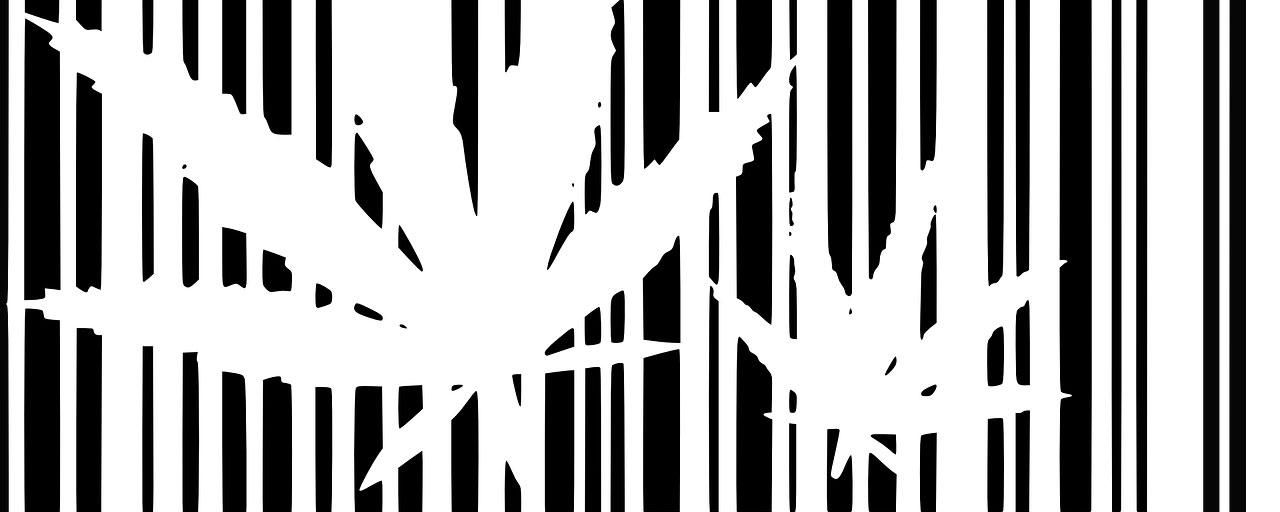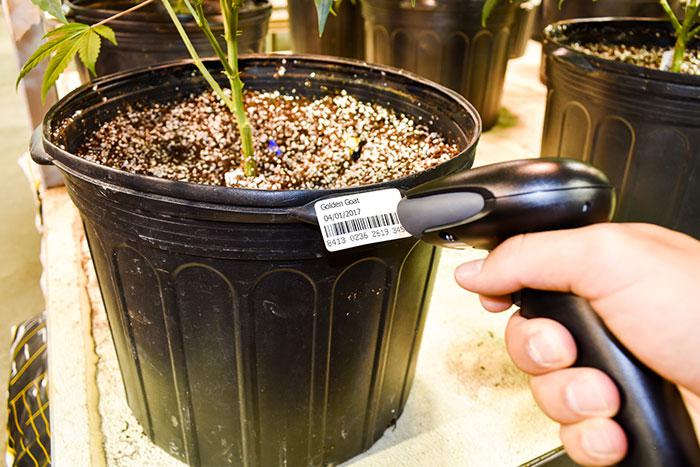Seed-to-Sale Traceability: The Role of Barcodes and RFID in Regulatory Compliance of the Marijuana Industry
By: Zac A. Papantoniou, JD, Business Operations Manager at BarcodesTalk

As of the current date, thirty-three states and the District of Columbia currently have passed laws broadly legalizing cannabis (aka “marijuana’ for those still not “in the know”) in some form. Let that sit and marinate in your mind for a moment - what was once considered a taboo vice (not to mention a crime) to partake in, a mere 23 years later has become common-place, legal in 66% of the country, and a booming commercial cash-cow for business. According to a Dec. 2018 report by NBC , legal marijuana was a $10.4 billion industry in the U.S. in 2018 with a quarter-million jobs devoted just to the handling of marijuana plants. In 2018, investors pouring in over $10 billion into cannabis in North America, and with the combined North American market expected to reach more than $16 billion in 2019.
“Seed-to-Sale” Tracking, Barcodes and Their Role In Regulatory Compliance
 The states that have legalized cannabis have taken it upon themselves to require comprehensive due diligence from every person in the chain of custody, so to speak, of the cannabis and products made from it.
The states that have legalized cannabis have taken it upon themselves to require comprehensive due diligence from every person in the chain of custody, so to speak, of the cannabis and products made from it.
Regulation is so strict at the state level because, despite the “legal” classification in states that have approved it, under federal law cannabis is still categorized as an illegal Schedule I narcotic - as such the burden is on the states that have legalized marijuana (whether recreationally or medically, and in some cases both) to prove that legalization has not aided black market activity. Therefore, to ensure cannabis products are safe to consume, and to prevent any parts from making their way to the black market, state and local regulators require marijuana plants be tracked and traceable from seed all the way to sale.
This mandatory tracking compliance requirement is shared by all states that marijuana has been legalized in thus far, and is known as “seed-to-sale tracking” -- which, as its name implies, is responsible for following a cannabis plant from the time its seed is planted in soil until it is purchased at a dispensary. This includes tracking every detail from sewing of seeds to selling of the final products. Growers are generally required to keep tabs on each plant, including its origins, strain, use (medical/recreational), placement within the growing facility, and even the names of employees that have handled the product at all stages - this is where barcode and RFID technology comes into play.
Generally speaking, barcodes are fairly simple - they essentially provide a graphic representation of an identifying number. Each individual code is tied to a specific record and field in a database, with the “UPC-A” code being the standard used in the United States to identify individual retail products. While the most common use of barcodes is inventory control, they also have the ability to provide a veritable cornucopia of data, which will be discussed in greater detail below.
Besides inventory control barcodes are commonly used in many industries as a method for cutting costs and saving time, being both cost-effective and reliably low-tech, making them a valuable selection for businesses looking to improve efficiency and reduce overhead. Generally, the benefits of using barcodes include:
- Reasonably inexpensive to design and print.
- Provide accurate data quickly, enabling better metrics and more informed decision making.
- Can be used for any kind of necessary data collection, from essential information about the product to the movement of products through the supply chain.
RFID, or Radio Frequency Identification provides a more intelligent method of capturing data by using low-power radio frequency technology. An RFID system can read the information on a tag without requiring line of sight, a particular orientation or the need to be close in proximity to what’s being “read.”
While RFID traceability is much more cutting-edge in terms of technology, the largest drawback to its implementation and use is the fact that being high-tech, also means that RFID technology is fairly cost-prohibitive for many businesses and generally being exponentially higher-priced than using barcodes.
That said, if cost is not an issue, there are some clear benefits to a business using RFID technology which include:
- Multiple tags can be read simultaneously, and from a distance, increasing efficiency on average 10 to 15 times, in comparison to barcodes,
- Tags are are extremely durable against impact and environmental factors (i.e. soil and incremental weather).
- Tags can be geo-located, making it easier and quicker to find misplaced items.
While using RFID technology is clearly more efficient than scanning barcodes, both barcode and RFID technologies create strong chain of custody and can be integrated into track-and-trace systems.
As previously mentioned, the most common use of barcodes/RFID tags is inventory control, however they also have the ability to provide almost limitless amounts of data in theory - the amount of data that will be displayed when a barcode is scanned is dependant on the amount of data entered into a Point of Sale (P.O.S.) system correlating with a particular barcode. For instance, a product identifier such as a SKU code, can bring up plenty of related data within a P.O.S. system, such as, how many of a particular item or items are in inventory and where they are kept in a dispensary or where an individual plant can be found on a farm.
Because a scanned barcode/RFID tag can “know” any time a cannabis plant is moved from a grow room to a flower room or is distilled into a concentrated product and even such identifying information as the batch the product was produced in, it has not only made this technology incremental in regulatory compliance but has practical applications as well, such as highlighting inventory irregularities and assisting dispensaries to identify potential theft.
States like Colorado for example, the very first state to legalize recreational cannabis in 2012, paved the way for other states as far as regulatory measures relating to strict compliance go - a 2017 Forbes magazine article titled, “ Tracking America’s Cannabis Industry Through Big Data ,” stated that, “[the] harnessing of information technology to track the cannabis market [was] key to Colorado’s forceful march towards creating a thriving legal marijuana industry. Crucially, the state’s ability to use tracking and Big Data could provide a reference point for other jurisdictions interested in the regulatory potential offered by tracking. This ‘closed loop’ ‘seed to sale’ inventory tracking system embodies a ‘full traceability’ mode…”
Conclusion
In the continually-evolving environment of what's been referred to as America's most highly regulated industry,and with regulatory compliance more stringent than what’s required of the alcohol and tobacco industries, and in some cases even more so than the pharmaceutical industry.
The commercial cannabis industry’s reach is rapidly expanding throughout the U.S. and the future business potential involved appears almost limitless, but where compliance is key. Regardless of what type of tracking labels and systems companies are using, barcode and RFID technology is proving to be incremental in seed-to-sale traceability, and will be so for the foreseeable future.
------
 About the Author
About the Author
Zac Papantoniou is the Business Operations Manager at Bar Codes Talk. Prior to his current role at Bar Codes Talk, he was the Director of Operations for an independent, retail compounding pharmacy in Tampa, FL, from 2015-2018. Before leading and directing the operations for 2 very different companies, he was a practicing attorney in FL for 5 years in the areas of business consultation, First Amendment defense, and intellectual property (trademarks and copyrights) law. He lives in Brooksville, FL, with his wife, Ali, son, Callum, and Tessie, his adorably fluffy canine daughter.
---
More Barcode articles you may enjoy:
